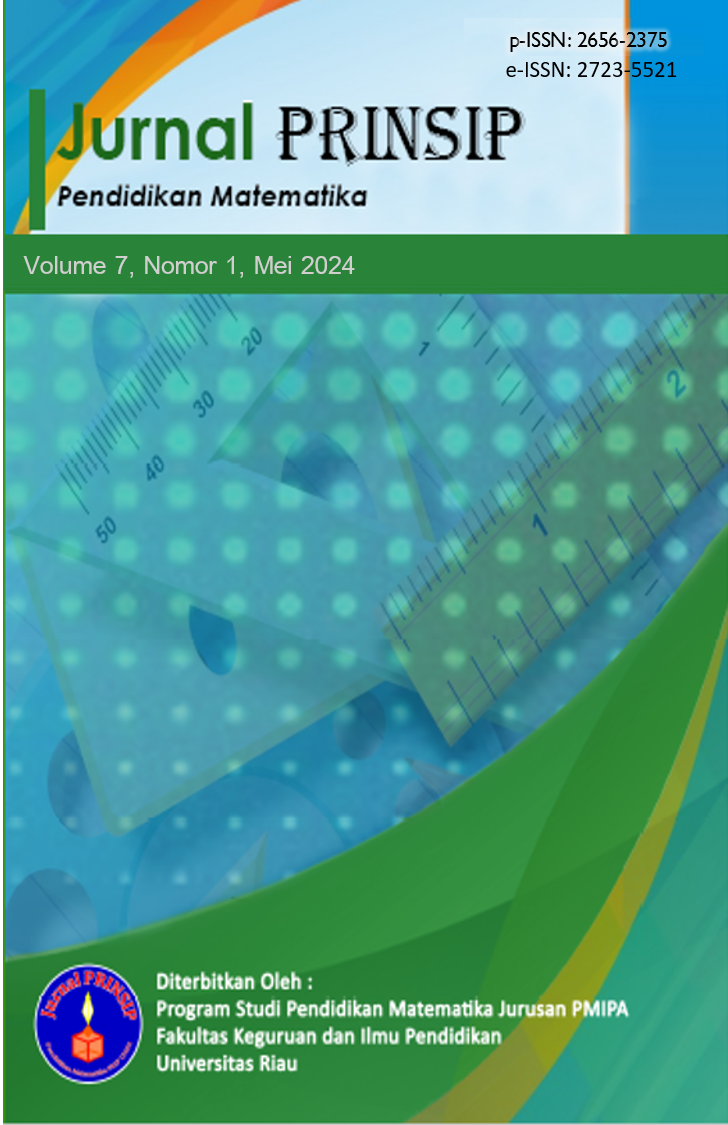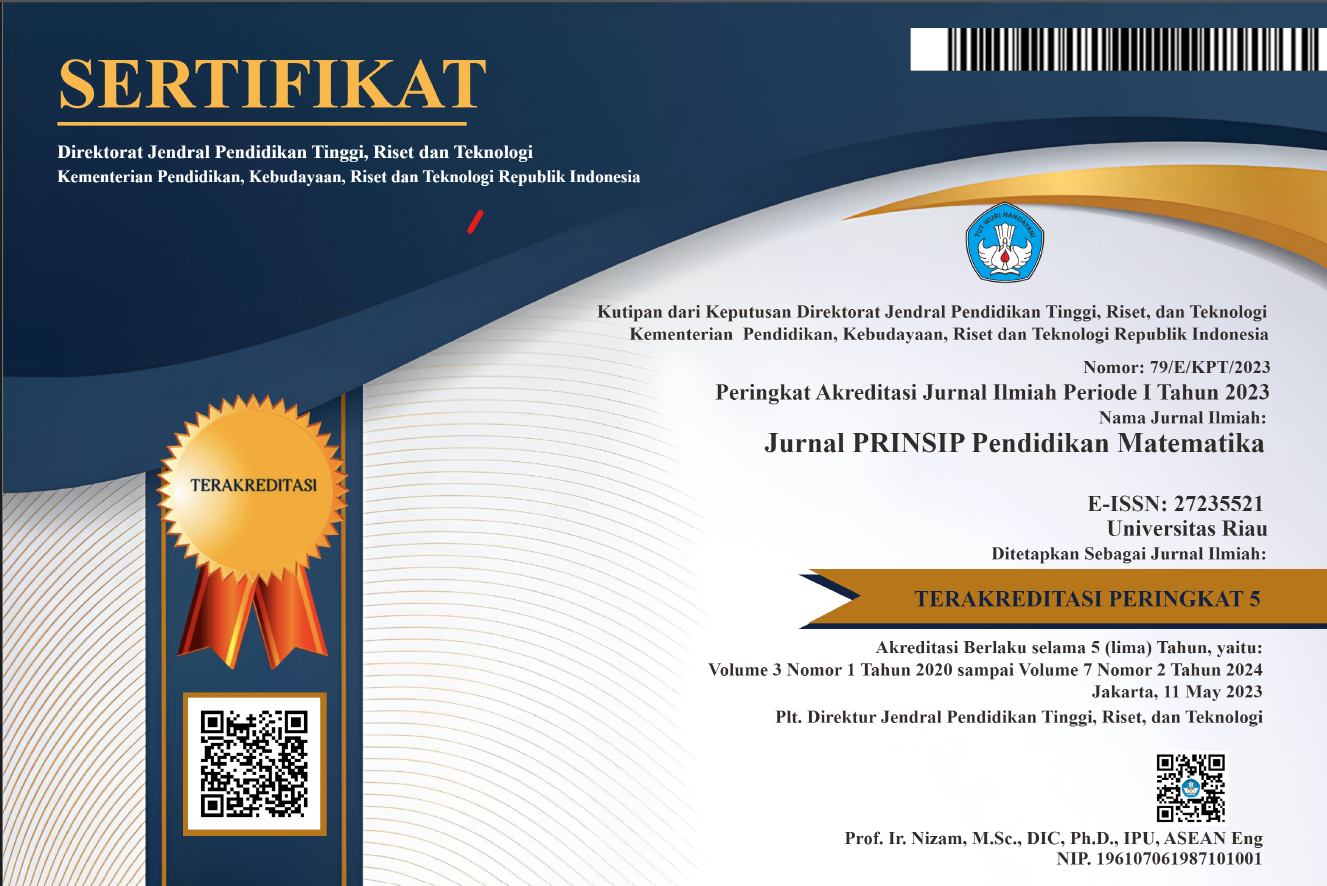ANALYSIS OF MATHEMATICS PROBLEM-SOLVING ABILITY BASED ON SOLO TAXONOMY VIEWED FROM STUDENTS' MATHEMATICS ABILITY
Abstract
Students' abilities in mathematics are very necessary in learning mathematics. One way to determine the level of students' ability to solve mathematical problems is with the SOLO taxonomy. This taxonomy consists of five levels: Prestructural, Unistructural, Multistructural, Relational, and Extended Abstract. This research is descriptive qualitative research. The research subjects were taken from 3 students in class X-4 of SMA Negeri 1 Jombang, and the criteria were that students had high, medium, and low mathematics abilities. The data collection methods used were tests, interviews, documentation, and supporting instruments in the form of problem-solving tests, interview guides, and documentation. Time triangulation was carried out to check the validity of the research data. The results of research on mathematical problem-solving abilities based on the SOLO taxonomy for subjects with high mathematical abilities and subjects with moderate mathematical abilities show that the subjects are at the Extended Abstract level, which means that the subjects can prove the truth regarding the results obtained so that the results obtained are relevant so that the subjects can make hypotheses in the form of formulas, patterns, or rules for solving problems. Students can generalize or apply mathematical concepts involved in the problem to similar situations or problems. Subjects with low mathematical ability indicate that the subject is at the Multistructural level, which means the subject can describe the steps in solving the problem, but there are still calculation errors.
Downloads
References
Dirjen Pendidikan Dasar dan Menengah. (2016). Panduan Penilaian oleh Pendidik dan Satuan Pendidikan Untuk Sekolah Menengah Atas. Kementerian Pendidikan dan Kebudayaan.
Fatimah, S. (2019). Analisis Pemecahan Masalah Matematika Berdasarkan Taksonomi Solo (Structure of The Observed Learning Outcome) Pada Materi Aljabar Kelas VII di MTsN 2 Tulungagung. UIN SATU Tulungagung.
Habiba, F. E., Sunardi, & Trapsilasiwi, D. (2015). Analisis Keterampilan Metakognisi Berpikir Kreatif dalam Menyelesaikan Masalah Matematika Pokok Bahasan Segiempat Siswa Kelas Akselerasi di MTs Negeri 2 Jember. Jurnal Edukasi UNEJ, 2(2), 16–21.
Kuswana, W. S. (2013). Taksonomi Berpikir. Remaja Rosdakarya.
Putri, H. E., Muqodas, I., Wahyudy, M. A., Abdulloh, A., Sasqia, A. S., & Afita, L. A. N. (2020). Kemampuan-Kemampuan Matematis dan Pengembangan Instrumennya. UPI Sumedang Press.
Rezky, R., & Jais, E. (2020). Hyphotetical Learning Trajectory: Pemecahan Masalah Materi Sistem Persamaan Linear Dua Variabel. Mandalika Mathematics and Educations Journal, 2(2), 92–101. https://doi.org/https://doi.org/10.29303/jm.v2i2.1780
Ruji, F. (2019). Analisis Kemampuan Pemecahan Masalah Matematika Berdasarkan Taksonomi SOLO pada Materi Aritmatika Sosial di SMP Negeri 8 Percut Sei Tuan Kabupaten Deli Serdang. Universitas Islam Negeri Sumatera Utara.
Sari, S. A. L., Sutriyono, S., & Pratama, F. W. (2019). Analisis Kemampuan Pemecahan Masalah Matematika dengan Taksonomi SOLO pada Siswa SMA. JUMLAHKU: Jurnal Matematika Ilmiah STKIP Muhammadiyah Kuningan, 5(1), 1–14. https://doi.org/10.33222/jumlahku.v5i1.502
Triyawan, A. (2021). Metode Penelitian Ekonomi Islam. CV Media Sains Indonesia.
Umrati, & Wijaya, H. (2020). Analisis Data Kualitatif Teori Konsep dalam Penelitian Pendidikan. Sekolah Tinggi Theologia Jaffray.
Utomo, E. P. L. (2015). Analisis Kemampuan Kognitif dalam Memecahkan Masalah pada Pokok Bahasan Aritmatika Sosial Berdasarkan Taksonomi Solo Siswa Kelas VII SMP Negeri 4 Jember. Universitas Jember.
Copyright (c) 2024 Jurnal Prinsip Pendidikan Matematika

This work is licensed under a Creative Commons Attribution-NonCommercial-ShareAlike 4.0 International License.





